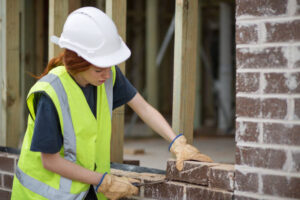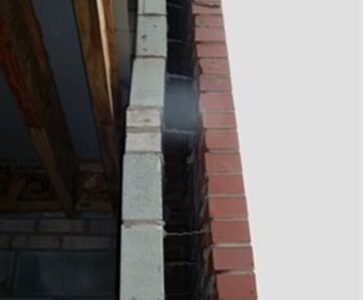Plumbers Lexington install, repair and maintain pipes, fixtures and other equipment used for water distribution and waste water disposal in residential, commercial and industrial buildings. They often work with electricity and must be comfortable working in cramped spaces and using tools.
Most plumbers start out their careers as apprentices and then earn a license after several years of on-the-job training. They must pass an exam to demonstrate their knowledge of the trade and local plumbing codes.

In new construction projects, plumbers install the pipes and fixtures that will connect to appliances such as toilets, showers, sinks, faucets, and water heaters. This involves laying out pipes, connecting them to fixtures, and testing for leaks and other problems. It requires a thorough understanding of building codes and regulations, as well as the ability to work from blueprints and architectural plans.
Plumbers also inspect existing homes and buildings for plumbing issues such as clogged drains, leaky faucets, and broken water heaters. They may recommend repair or replacement services and provide estimates based on their findings. They can also offer advice on how to minimize future plumbing problems, such as by installing water-saving faucets and showerheads.
Some plumbers specialize in particular types of plumbing systems. For example, sanitary plumbers troubleshoot and repair sewage systems, which can include sewage tanks, pipes, and drains in residential and commercial buildings. They do not, however, install or replace appliances such as washing machines.
Licensed plumbers have completed an educational or apprenticeship program and are qualified to perform more advanced installations and repairs. They are often supervised by a master plumber, who is responsible for overseeing their work and providing training.
Water supply plumbers install and repair various water tanks and supplies lines, such as kitchen sinks, overhead storage tanks, bathroom tanks, and pipes. They can also handle specialized water supply systems like rainwater harvesting systems and greywater recycling systems.
Plumbers who service and repair plumbing systems are on-call to address emergency situations, such as a burst pipe or a clogged sink. They use their knowledge and problem-solving skills to quickly identify and fix the issue at hand. This type of plumber typically works on a contract basis and is hired by both home and business owners.
Plumbing is a physically demanding profession that requires strong physical stamina and manual dexterity. It also demands a keen attention to detail, as even small errors can have significant consequences down the line. Finally, effective communication and customer service skills are essential for plumbers to be successful in their careers.
Maintenance
When most people think of plumbing, they imagine a dirty, thankless profession that involves wading through puddles of muddy wastewater and cleaning out overflowing toilets. While it’s true that plumbers do work in unsanitary conditions, they also help create and maintain vital infrastructures that support human life.
Whether they are installing water delivery systems in homes or working on the plumbing system of an entire city, plumbers use their knowledge of science, technology, engineering and math to provide essential services that we all depend on. This includes ensuring that we have access to clean drinking water and the means to dispose of waste safely. It’s no exaggeration to say that if it weren’t for plumbers, we would be living in a very different world.
In addition to the usual residential plumbing services, many plumbers offer maintenance and repair work in commercial and industrial settings. This can include large office buildings, hospitals, factories and power plants. In these environments, plumbers often collaborate with architects and construction teams to ensure that the plumbing is seamlessly integrated into the larger building structure. They may also be responsible for maintaining and repairing complex heating, ventilation and air conditioning systems that require sophisticated knowledge of mechanical engineering.
One of the most important things that plumbers do is preventative maintenance. This can involve checking pipes for leaks and ensuring that all fixtures are functioning properly. It can also involve installing new parts to improve efficiency or address safety concerns. For example, some plumbers install low-flow showerheads and faucets to reduce the amount of water used in a home or business. Others may retrofit homes and businesses with energy-efficient heating and cooling systems that significantly lower utility bills.
Most plumbers spend most of their time out in the field, meeting and interacting with customers. This can be a great career choice for those who enjoy working with people. Many plumbers belong to trade unions that negotiate wages on their behalf, and they generally earn a higher wage than the average worker in other professions. They also have good job security since it’s almost always possible that someone will need their services, especially in an emergency.
Troubleshooting
In addition to repairing and replacing pipes, plumbers can also troubleshoot plumbing issues. They can help determine what is causing problems with your plumbing system and fix them before they become bigger problems. This can save you money in the long run by preventing costly repairs. In addition, plumbers can also give you advice on how to prevent future plumbing problems from occurring.
One of the most common issues that plumbers can help with is clogged drains and toilets. These issues can be caused by a variety of things, including hair, grease, and other debris. Plumbers can use different techniques to remove the clog and restore proper water flow. For example, they may flush your toilet with a special tool or use a snake to remove the clog.
Other common plumbing problems include leaky faucets and leaking water heaters. These issues can be caused by faulty faucet washers, loose or broken pipes, or old fixtures. Plumbers can install new faucets and water heaters, as well as repair or replace existing ones. They can also provide you with tips to prevent future problems, such as reducing water consumption or promoting responsible usage.
In some cases, a plumbing problem may not be immediately apparent. In these cases, plumbers can perform a number of diagnostic tests to identify the source of the problem. These tests can include observation, measurement, and analysis.
Plumbers are trained to find the root cause of a problem and repair it quickly and efficiently. This can ensure that the product or process is functioning properly and at its most efficient, ensuring customer satisfaction. In addition, effective troubleshooting can reduce downtime and improve overall productivity.
Plumbing problems are a common part of owning a home or business, and can often be solved with simple solutions. However, more complex issues require the services of a professional. If you are experiencing a problem with your plumbing, it is important to contact a plumber right away. They can provide you with the help and advice you need to resolve your plumbing issue quickly and easily.
Repair
Whether the plumbing system is new or old, it requires routine maintenance to keep working properly. Plumbers clean drains, inspect appliances for leaks, and replace worn-out parts to prevent major problems from occurring. Some routine services that plumbers offer include installing water filters, cleaning sewer lines, repairing toilets and faucets, and maintaining water heaters.
When pipes experience a problem, it usually results in a leak or rupture. Leaks should be repaired immediately to avoid expensive damage and potential health issues. Most homeowners use a repair sleeve to cover the leak until a professional can come in and implement a more permanent solution. Plumbers can also repair or replace damaged sections of pipe, fix broken fixtures, and install new pipes.
While some leaks can be caused by overuse or improper installation, others can be due to aging or even natural causes. Plumbers are trained to detect these issues and use specialized equipment to locate the source of the leak and repair it as needed.
Another common issue that plumbers fix is clogged drains and sewer lines. These are typically caused by buildup of hair, food, or other materials that can block the flow of water in a pipe. When a clog occurs, plumbers use a variety of tools to remove the clog and often check the situation with a camera to ensure that they have removed all the debris. Plumbers may also recommend a sewage cleaning service to clear out the line if it has become severely blocked.
Plumbing systems are complex, and even minor problems can cause a lot of damage if left unattended. Fortunately, plumbers are skilled professionals who can provide fast and effective repairs to keep your home or business running smoothly.
A plumbing system is essential for the comfort and safety of your home or office, so it is important to maintain it properly. If you notice any signs of a problem, call a plumber right away to avoid costly and messy repairs in the future. Whether you need to repair a broken toilet, unclog a drain, or install a new fixture, a plumber is the best option for all of your plumbing needs.








